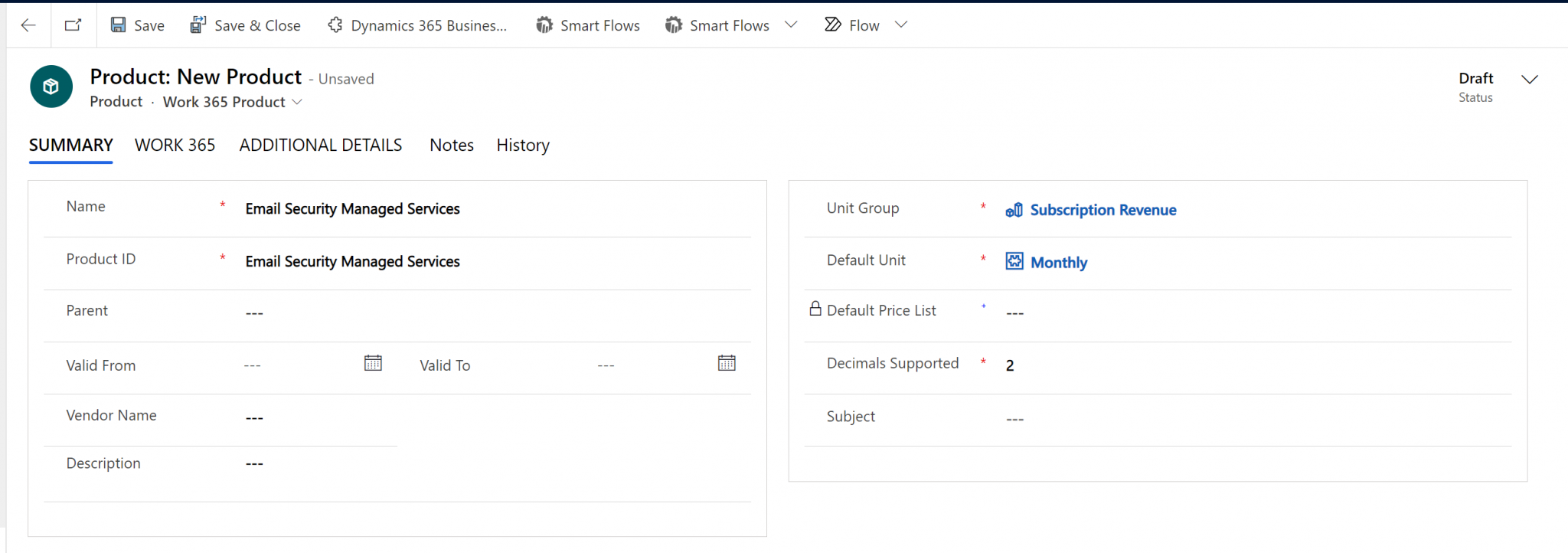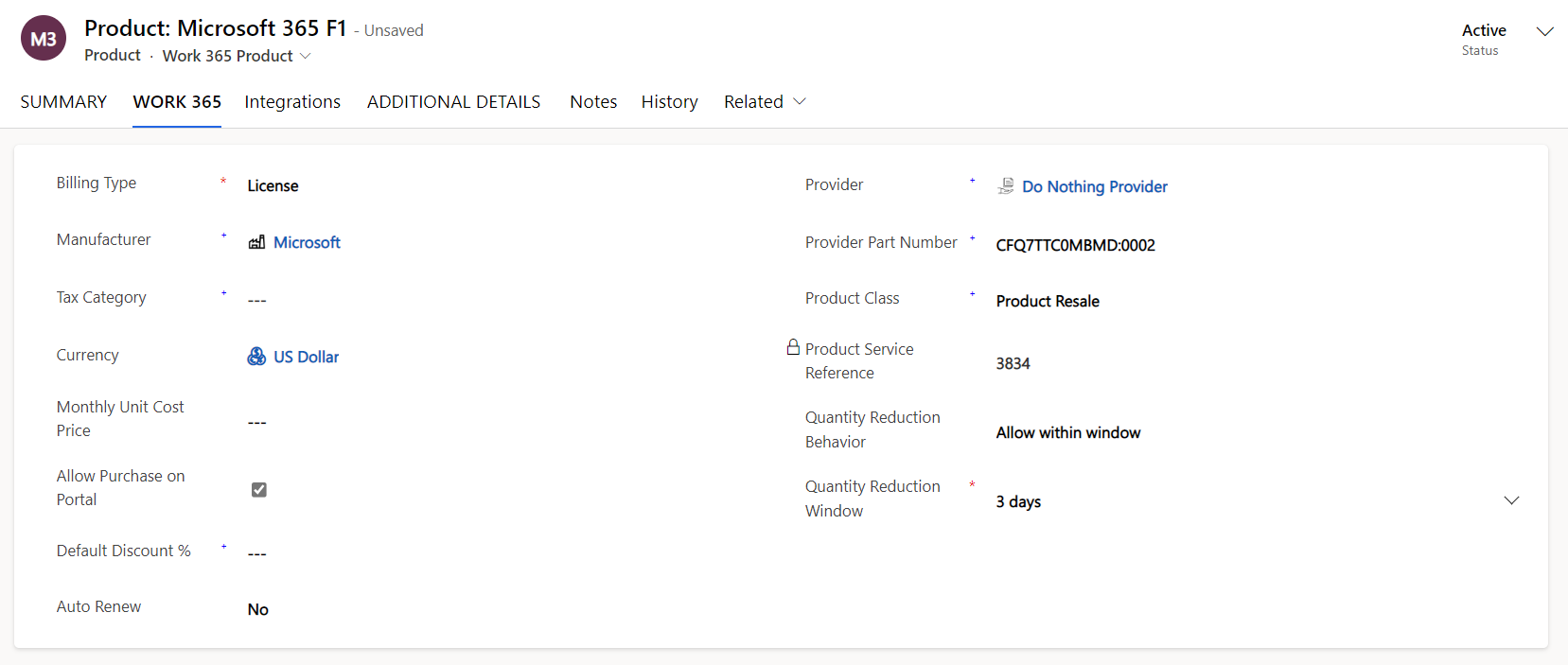Configuring Product Catalogue
Product Setup
- Determine whether it is preferred if products should be created in an active state or a drafted state. By default Dynamics will create products in a drafted state.
- Click Add Product at the top of the page
- Change the Form to the Work 365 Product Form:
- Enter the Product Details. Save the Newly created Product
Once the unit group is selected and the product is saved, Dynamics will not modification. If the wrong unit group is selected, the product maybe deleted (if not already used) or retired/deactivated


For non-recurring item products it is recommended to select Default Unit as the Unit Group, and Primary Unit as the Default Unit.
Provider
If you are using an Automatic Provider- specifying a Provider will auto-provision the product when it is associated with a Subscription
- To Provision the same product into multiple Providers leave the Provider field blank. This way you can specify the Provider during the Provisioning and subscription setup process.
Provider Part Number
- For Microsoft Direct Partners Product ID will map to the following from the Microsoft Price List
- Offer ID for Legacy Skus
- Classic “Microsoft Azure”: MS-AZR-0145P (for production environments)
- Product ID + Sku ID for NCE skus
- Azure Plan: DZH318Z0BPS6:0001
- Tech Data: Sku # from the Tech Data Price list
- Manufacturer
- Tax Category: Only applicable when needing to apply tax rates at a product level instead of an overall invoice level.
- Product Class: This field is used in Accounting integration, Sales Incentive calculation, general reporting.
- Currency: This will be the default currency which is added to subscriptions or NRIs when a product is added.
- Product Service Reference: Used by the Work 365 Product Service. Do Not Modify
- Monthly Unit Cost Price: This is the monthly internal cost for a sku. Note if the sales unit on the summary page of the product is Annual, the value in this monthly cost field is still required to be monthly. This is because when the product is added to a subscription and the sales unit is annual, the system will calculate what the annual cost will be.
Note for Direct CSPs the cost will vary based on the term of the subscription. Then when the product is added to a subscription, the system will automatically apply the cost the following day after the subscription is created.
- Quantity Reduction Behavior (QRB): Determines whether reducing licenses on the subscription will be allowed, disallowed, or allowed within a window. This field is automatically populated via the product service when the product is created via the product service.
- Quantity Reduction Window (QRW): Determines the time frame after a subscription is created where license reductions are Allowed within Window on the QRB. This also applies to subscription renewals. This field is automatically populated via the product service when the product is created via the product service.
- Allow Purchase on Portal: Determines if the published product will be displayed on the Portal
- Default Discount %: Discount to be automatically applied when the product is added to sales orders, subscriptions, or non-recurring items.
-
Add the Price List Items
- Go to the Additional Details tab and select +New Price List Item.

- Add the price list

- The currency will populate based on the Price list selected
- The unit will populate based on the default unit on the product. It is possible to switch the unit with another that is in the same unit group already selected on the product.
- Set the Amount with the customer selling price.
- If billing with multiple units (ie. Monthly and Annually) create annual and monthly price list items for the product by following the same steps as before.
- If the product was created in a drafted state, be sure to Publish the product so it can be added to quotes, subscriptions, etc. This will update it to an active state.
Updated over 1 year ago
